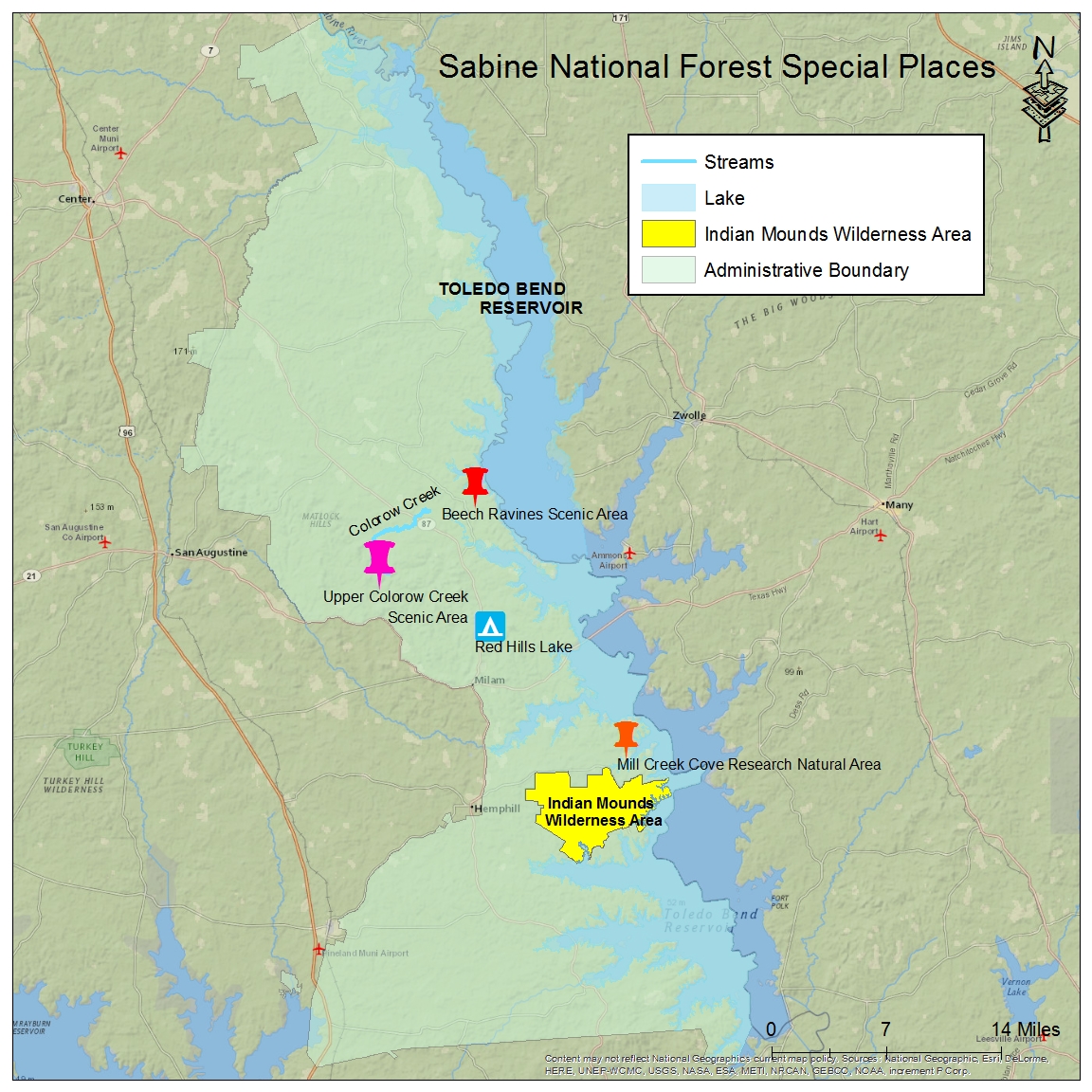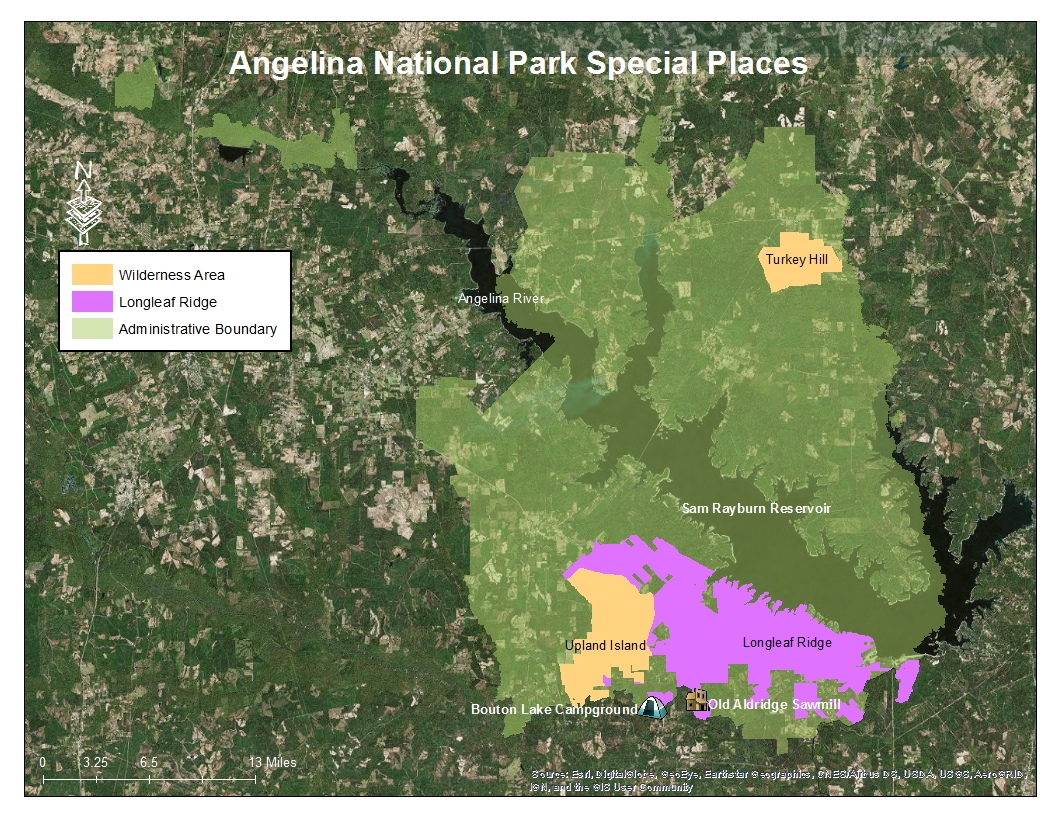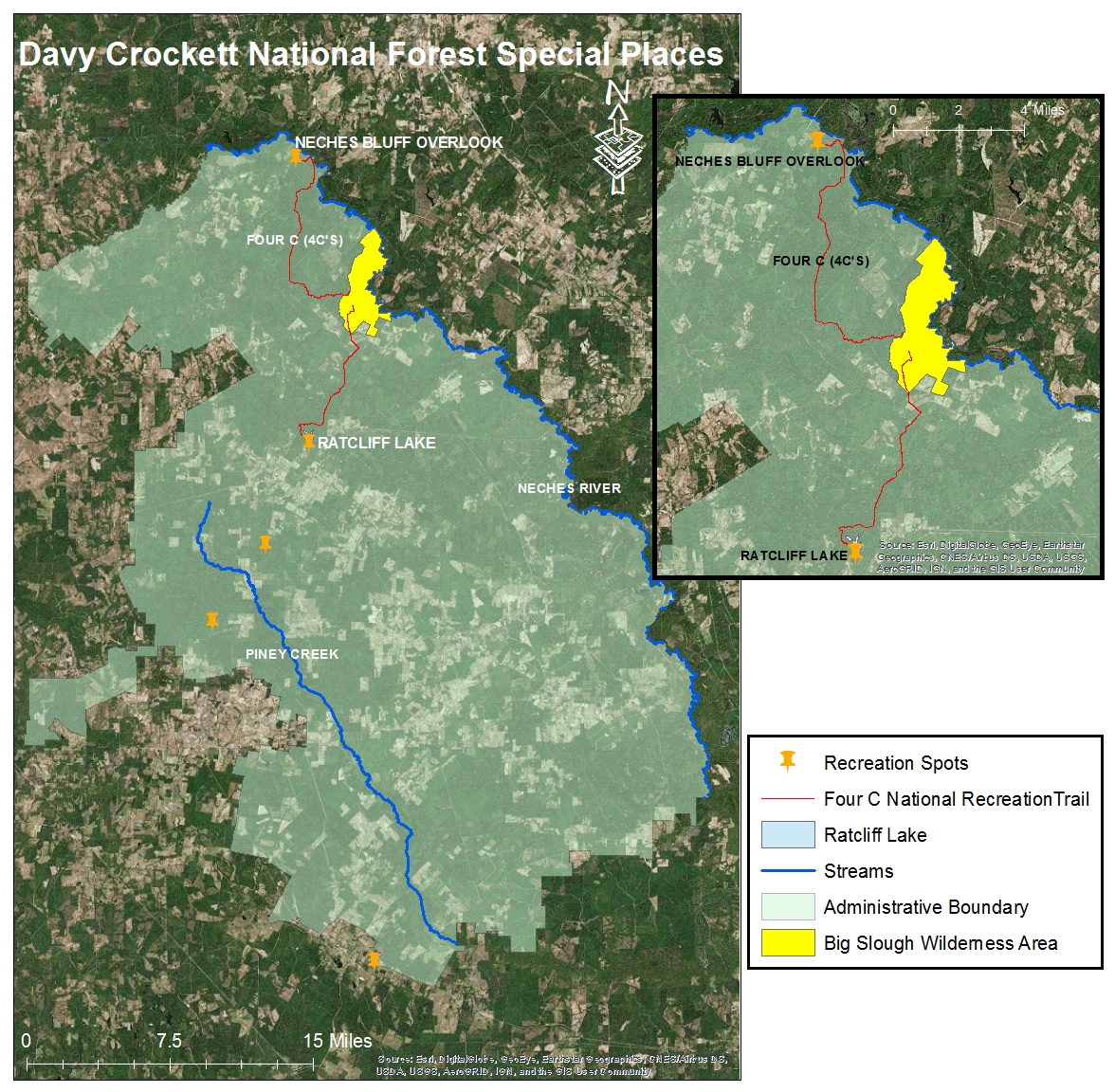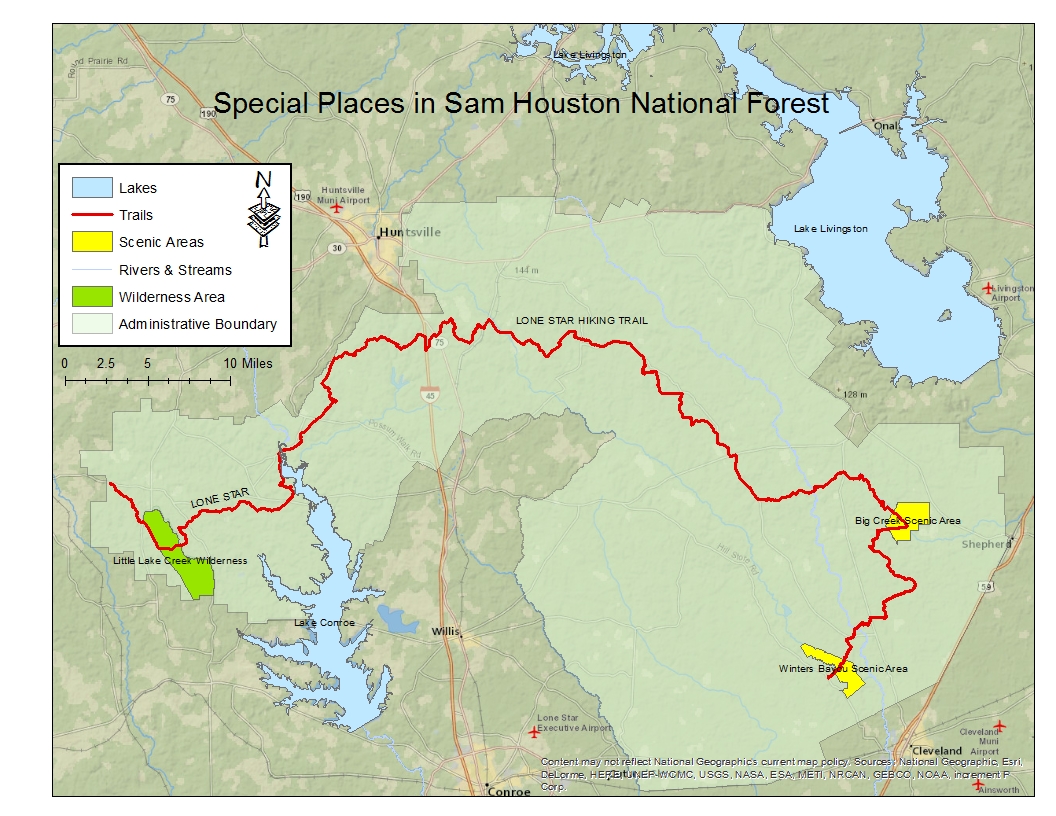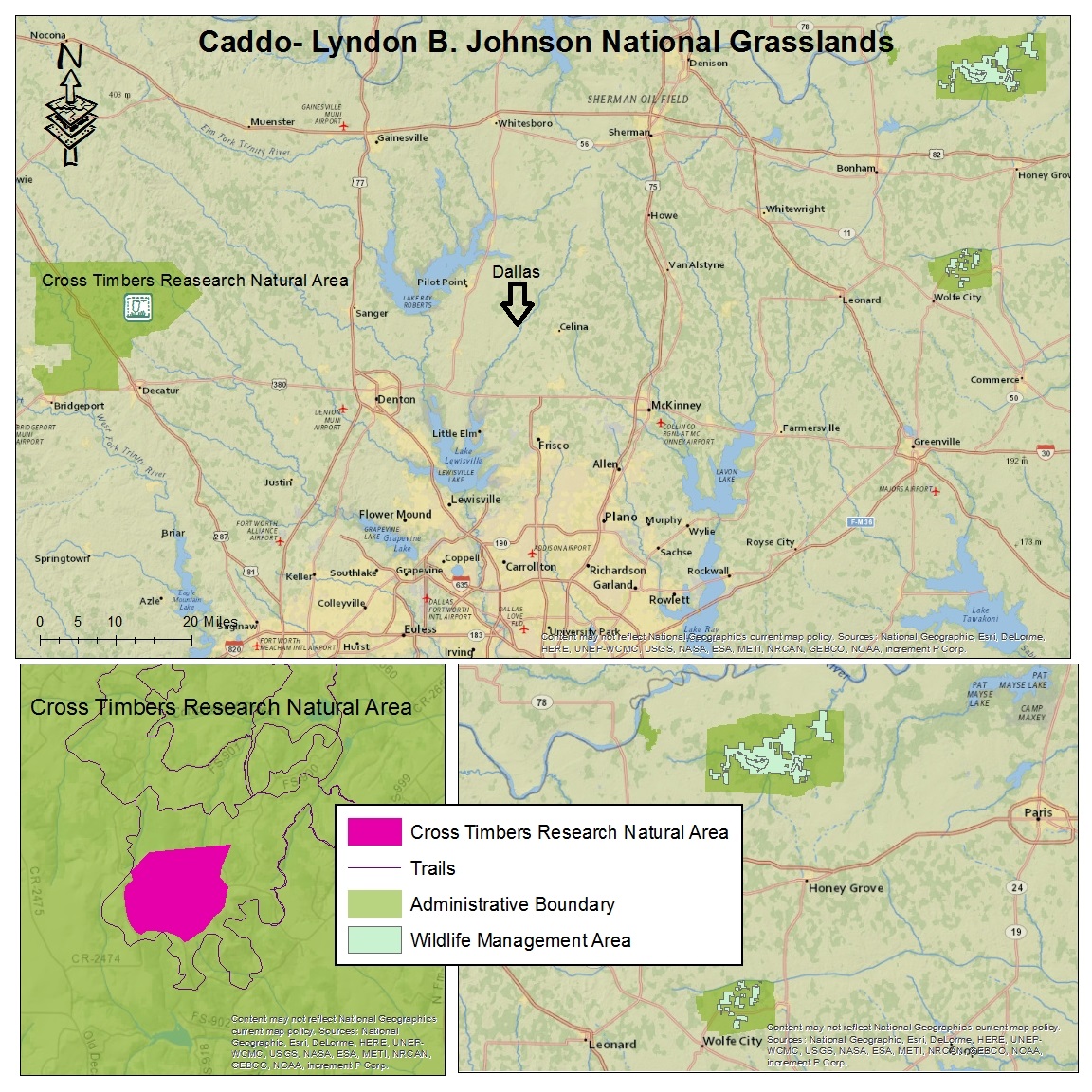Sabine National Forest
Upper Colorow Creek Scenic Area is an area of undisturbed moderately moist hardwood forest that features sandstone cliffs, large Southern Magnolia Trees and large American Beech trees.
Mill Creek Cove Research Natural Area contains the largest, never-harvested old growth American Beech and Southern Magnolia forest.
Beech Ravines Scenic Area is a section of shaded canyons housing many rare herbaceous plant species.
Trail Between the Lakes is a 30-mile hiking trail that runs through both Angelina and Sabine National Forests and along Sam Rayburn and Toledo Bend Reservoirs.
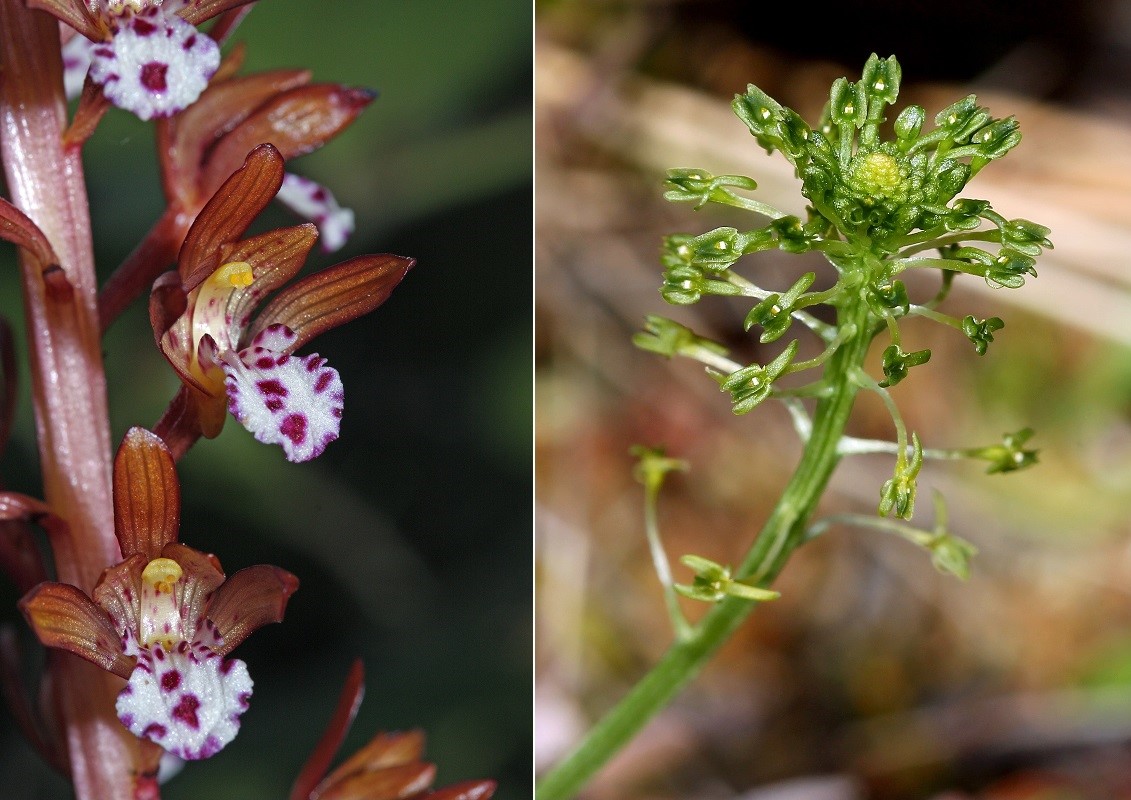
Indian Mounds Wilderness Area is a beautiful wilderness area on the western shore of Toledo Bend Reservoir that showcases scenic views of the lake. This is the second largest wilderness in the National Forests and Grasslands of Texas and features Coralroot (left) and Green Adder’s Mouth Orchids (right). Toledo Bend Reservoir forms the border between Texas and Louisiana. This lake dams the Sabine River and is a very popular area for boating and fishing. The wilderness area is also a survivor of a Southern Pine Beetle infestation.
Red Hills Lake is a recreational area near Toledo Bend Reservoir that is popular for camping, fishing and swimming.
Angelina National Forest
Upland Island Wilderness Area is the largest wilderness area in the National Forests and Grasslands of Texas and features Longleaf Pines, while the southern part of the wilderness area is covered by the Neches River bottomlands. This wilderness area includes small bogs and seepage areas in deep sandy areas.
Longleaf Ridge Special Management Area holds many rare plant species across the area’s varied habitats. The habitat types found here include Longleaf Pine forests and savannahs as well as bogs and other wetland-like environments.
Turkey Hill Wilderness Area is a haven for moisture-loving non-woody plants such as the Carolina Lily and several species of orchids including the Crane-fly Orchid. In the bottomlands of Turkey Hill Shagbark Hickory and Pawpaw Trees are often found.

Sawmill Hiking Trail is a 5.5 mile trail that winds past “Old Aldridge Sawmill, ”the remains of an early 1900s sawmill. The trail begins at Boykin Springs Recreation Area and ends at Bouton Lake Campground.
- Bouton Lake Campground is a simple campground aimed at fishing and hiking enthusiasts. The campground includes beautiful riverside woods featuring Bald Cypress.
Sam Rayburn Reservoir divides Angelina National Forest and dams the Angelina River. It is great place for boating and fishing.
Davy Crockett National Forest
Four C National Recreation Trail winds from Neches Bluff in the northeast corner of Davy Crockett National Forest south 20 miles to Ratcliff Lake Recreation Area. This trail starts on top of the uplands (Neches Bluff) and descends down to the Neches River floodplain and past the Big Slough Wilderness Area.
Big Slough Wilderness Area rests in the Neches River floodplain and is an excellent place for quiet and solitude. Big Slough features magnificent bottomland hardwood forests and floodplain features such as swales (a low spot in a tract of land or valley-like intersection between two slopes that is usually moister than adjacent higher land) and abandoned river channels.
Neches River is one of the few wild rivers left in East Texas and is great for canoeing, kayaking, fishing, and swimming. It flows through both Angelina National Forest and Davy Crockett National Forest. Piney Creek is a major tributary to the Neches River. Piney Creek boasts extensive floodplains and bottomland hardwood forests.
Sam Houston National Forest
Lone Star Hiking Trail is the longest continuous backcountry hiking trail in Texas at 128 miles long. The trail starts along the far western edge of Sam Houston National Forest and heads east across the park, first heading north then south down to Winters Bayou Scenic Area. The trail features views of many of the forest’s attractions such as Big Creek Scenic Area, Little Lake Creek Wilderness, Lake Conroe, and the East Fork of the San Jacinto River.

Winters Bayou Scenic Area features extensive Palmetto-Hardwood Flats, a plant community that occurs is poorly drained areas where semi-permanent pools of water are common. Dwarf palmetto, a Gulf Coast native, is commonly found here. Water from the eastern part of Sam Houston National Forest, including Big Creek Scenic Area drains into the East Fork of the San Jacinto River.
Big Creek Scenic Area is another wetlands area of Sam Houston National Forest. It features Southern Magnolia, American Beech, and Loblolly Pine forests as well as Baygalls.
Little Lake Creek Wilderness Area is the only wilderness area in Sam Houston National Forest. It is located on its southeastern edge. It contains extensive bottomland hardwood forests.
Lake Conroe is one of the drinking water lakes for the Houston area. The dams that creates Lake Conroe back-up the West Fork of the San Jacinto River. Lake Conroe along with Lake Livingston and Lake Houston supplies 87% of the City of Houston’s drinking water. Managing the water quality in these lakes is important because doing so would reduce the amount of purification needed which would reduce the cost of supplying safe drinking water to the Houston area. Protecting upstream floodplains, like those surrounding Lake Conroe in Sam Houston National Forest, decreases the risk of flooding to downstream areas such as Houston. Upstream floodplains act as a buffer and slow fast-moving flood waters before they reach urban areas. Lake Conroe is a very popular fishing and boating location.
Caddo- LBJ National Grasslands
Cross Timbers Research Natural Area protects limestone mesa and crosstimber habitats.
Image Credits: Walter Siegmund; Rob Routledge, Sault College, Bugwood.org; Manuel.conde;Kej605 (cropped); KENPEI
Map Credits: US Forest Service GIS Data and ESRI ArcMap software
